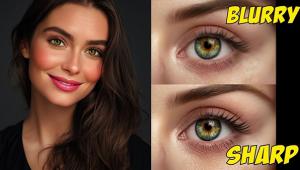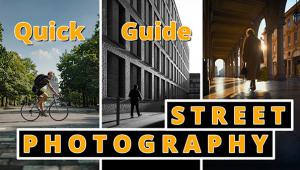Sony’s Cyber-shot DSC-R1; 10-Megapixel Digicam First With APS-C Sensor—Is This A Trend? Page 2
Evaluation: The high ISO and dynamic range issues are discussed in the Technology sidebar, but in resolution, the DSC-R1 beats the 8-megapixel digital SLRs by a small margin. My best (low ISO) Fine JPEGs made for very good 13x19" prints at 240dpi, after some optimizing and sharpening in Photoshop. When I started with images made in raw capture, the tabloid-size prints exhibit slightly higher definition of the most intricate detail. Those prints received a "technically excellent" rating from several photographers who examined the framed photos.
The Benefits Of Sophisticated Sensor Technology |
|
 |
|
 |
|
 |
|
 |
|
 |
|
|
The Benefits Of Sophisticated Sensor Technology
The most significant aspect of the Sony Cyber-shot DSC-R1 is the new oversized
sensor with the largest photosites of any camera with built-in lens. This is
also the first Sony CMOS chip to be used in any digicam. Presumably, we'll
see it in other cameras, too, perhaps in several brands, since Sony is a major
sensor supplier to the industry. That would be good news in my estimation, because
of the greater light sensitivity provided by the oversized photosites.
While the sensor should produce clean images in many situations, Sony has included
three distinct Noise Reduction (NR) systems. A new Clear Color NR feature amplifies
the signal at each pixel for improved signal-to-noise ratio with very low power
consumption. At high ISO settings, additional NR processing is automatically
activated. Finally, during 1/25 sec and longer exposures, a long shutter speed
NR system kicks in; an NR symbol then appears in the LCD monitor. No user selectable
control is available for any of these noise suppression systems.
Noise Control Evaluation: While reviewing my high ISO images--made
without long shutter speed NR--I reached the following conclusions: The
ISO 400 images are particularly clean, significantly better than the DSC-F828
images; with the right sharpening techniques, they made for excellent 8.5x11"
prints and very good 11x17" glossies. By ISO 800, the digital noise pattern
is more obvious, but the images still make for highly acceptable 8x10"
prints. By comparison, images from the DSC-F828 are useable only for 4x6"
prints. At these ISO levels, the DSC-R1 is the best of the dozen high-resolution
prosumer cameras that I have tested. (Few similar models offer ISO options above
400 or 800.)
At higher ISO levels, noise becomes more problematic. My ISO 1600 images exhibit
obvious noise and are quite soft, perhaps due to overprocessing, but 5x7"
prints look fine. By ISO 3200, mottled, blotchy color specks (chroma noise)
obliterate fine detail in shadow areas. Frankly, I would use ISO 3200 only if
there were no other way to take sharp photos in low light where a tripod was
prohibited. Aside from that issue, the overall performance is very respectable,
making the DSC-R1 a fine choice for some high ISO shooting.
Additional Noise Suppression: Long shutter speed NR is also
available but it's not ideal. This system makes for smoother images, but
in my opinion, processing is excessive. The ISO 800-3200 images especially appear
soft due to blurring, with flattened detail, for an overall "plasticky"
effect. These aspects are most visible in low contrast scenes and cannot be
fully corrected with sharpening in Photoshop. Unless you appreciate the unduly
smooth effect, avoid shooting at 1/25 sec or longer shutter speeds. Note, too,
that converter software (including the Sony program) does not provide any method
for moderating the camera's noise suppression processing when working
with raw files.
Dynamic Range: As mentioned in the introduction, the large
photosites should allow the DSC-R1 to generate images with maximum detail in
both highlight and shadow areas. In order to confirm that benefit, scientific
testing would be required. During informal testing under harsh lighting, the
camera produced images with some loss of highlight detail but often held shadow
detail very well. In dark locations, the camera did a fine job of maintaining
shadow detail in images that were correctly exposed. Overall, dynamic range
seemed to be slightly wider than with the DSC-F828 with its smaller sensor and
tiny photosites.
Wide Dynamic Range |
|
 |
|
|
It's also worth noting that the DSC-R1 includes an unusual feature called
Advanced Gradation Control System (AGCS). This is a remarkably sophisticated
utility that adjusts tonal range to optimize contrast "to avoid crushed
shadow detail and clipped highlights." Problem is, AGCS produced only
a subtle difference that was not visible in the vast majority of my images.
Final Assessment: At low ISO settings, the DSC-R1 does not
offer a major digital noise benefit over the DSC-F828, although ISO 200 images
are a bit "cleaner" when viewed at 100 percent magnification. By
ISO 400, the DSC-R1 produces obviously better quality without the coarse, mottled
"grain" pattern visible in DSC-F828 images. At this level, the DSC-R1
is competitive with some digital SLRs. Even at ISO 800, performance is excellent
for a high-resolution digicam.
So, what's the bottom line? Does this 10-megapixel digicam, with extra
large CMOS sensor and oversized pixels, offer major benefits over an 8-megapixel
camera with a smaller CCD chip? The answer is a qualified, yes.
In terms of resolution, there's not a huge benefit in 10 vs. 8 million
pixels, so the difference is not obvious in prints until the 13x19" size,
where the DSC-R1 wins hands down. Granted, the higher image quality can also
be attributed to the superior 24-120mm (equivalent) lens. In the 28-120mm range
for example, the newer zoom provides better edge sharpness than the 28-200mm
zoom in the DSC-F828. As a bonus, it's not plagued by the purple fringing
(chromatic aberration) typical with the longer zoom.
In the dynamic range, the difference is not obvious. While shadow detail is
better in extremely contrasty scenes, highlight detail is about the same. During
testing, I was unable to confirm Sony's claim of "2.5 times the
dynamic range" touted in a press release. But the DSC-R1 certainly outperforms
the DSC-F828 in terms of digital noise control, a very meaningful benefit at
every ISO over 200. (Granted, the new Clear Color NR system may be partially
responsible for the improvement.) The new sensor really proves its value here.
It deserves an "excellent" rating vs. the "acceptable"
grade earned by the older, smaller sensor, making the DSC-R1 far more suitable
for high ISO photography.
Technical Specifications
Sensor: 21.5x14.4mm CMOS sensor; 10.3 megapixels effective
Lens: 24-120mm (equivalent) f/2.8-4.8; 12 elements including
four aspherical
Shutter: Electronic; speeds from 30 seconds to 1/2000 sec plus
Bulb
Capture Formats: Numerous JPEG options plus raw (SR2 format)
capture
Focusing: Manual and autofocus; five-point sensor, automatic
or user-selectable focus points; autofocus assist lamp; Single Shot and Continuous
focus; Manual focus (focus by wire); Macro focus to 13.7"
ISO Equivalent: ISO 160-3200
Exposure Control: Center-Weighted, Multi-Pattern, and Spot
meter; exposure compensation and bracketing; AE Lock; highlight detail warning
available
Operating Modes: Aperture- and Shutter-Priority AE, metered
Manual, Program, plus four Scene Program modes
Color Modes: Standard sRGB, Vivid sRGB, Adobe RGB; Black and
White and Sepia
Connectivity: USB 2.0; video output
Power: One rechargeable InfoLithium NP-FM50 battery or supplied
adapter/charger
Dimensions/Weight: 5.5x6.6x3.8"; 2.3 lbs
Street Price: $999
- Log in or register to post comments

































